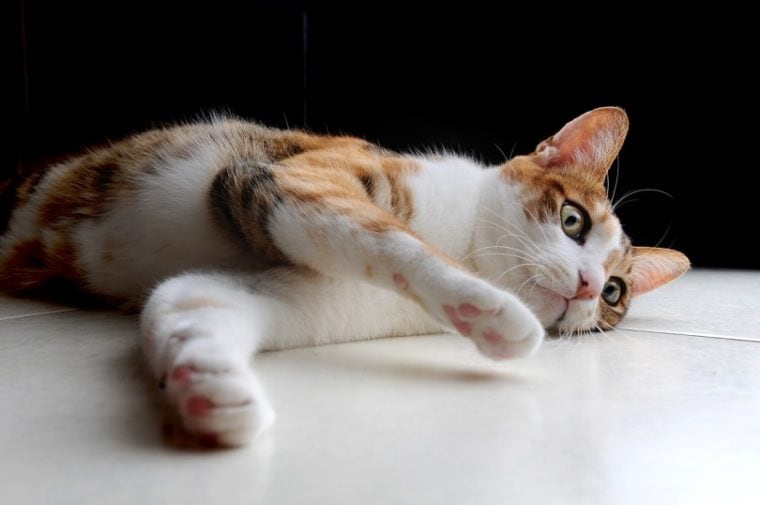
Ataxia is the scientific term used to describe the presence of abnormal, uncoordinated movements. Ataxia is not a disease itself, but rather a sign of an underlying disease or disorder.
There are three types of ataxia in cats, namely proprioceptive ataxia, vestibular ataxia, and cerebellar ataxia. We’ll discuss what all this means and why it’s important below.
Ataxia In Cats: Definition, Causes, & Treatment
1. Proprioceptive Ataxia
Proprioception is the body’s ability to sense its location, movement, and action. Proprioception allows a cat to walk without consciously thinking about where to place its feet next. Proprioceptive ataxia occurs when there is spinal cord disease. As a result, there is less feedback from the brain telling the body where it is in relation to the ground.
A cat with proprioceptive ataxia will be wobbly, its limbs will cross over as it walks, and its toes will knuckle over.

2. Vestibular Ataxia
The vestibular system is a sensory system involved in balance. The vestibular system can be divided into peripheral and central components. The peripheral component is located deep within the inner ear, while the central components are located within the lower area of the brain. Disease or damage to the peripheral or central system may lead to vestibular ataxia.
Signs of vestibular ataxia include a head tilt, leaning, falling, rolling, occasionally circling, and involuntary eye movements (nystagmus).
3. Cerebellar Ataxia
Cerebellar ataxia is seen in cats that have diseases or abnormalities of the cerebellum.
The cerebellum is a part of the brain at the back of the skull that is responsible for coordination and balance.
Cats with cerebellar ataxia often look normal at rest, but when they begin to move, they have uncoordinated movements and large, exaggerated steps. Affected cats typically also have head and body tremors, and a wide-legged stance.

Causes of Ataxia in Cats
There are many causes of ataxia in cats, depending on where the problem is located.
1. Causes of proprioceptive ataxia in cats include:
2. Causes of vestibular ataxia in cats include:

3. Causes of cerebellar ataxia in cats include:
4. Miscellaneous causes of ataxia
Treatment of Ataxia in Cats
The treatment is dependent on the underlying cause of the ataxia. In order to determine the cause and to classify the ataxia as proprioceptive, vestibular, or cerebellar, the treating veterinarian will take a thorough history of the affected cat, and perform a physical and neurological exam. Additional tests such as blood tests, ear swabs, X-rays, CT scans, MRIs, and cerebrospinal fluid analysis, may also be necessary.
Some causes of ataxia are treatable. For example, a middle or inner ear infection causing vestibular ataxia is treated with antibiotics or antifungal medications depending on the infectious organism identified. Surgery may be indicated for intervertebral disc disease, vertebral fractures, nasopharyngeal polyps, and certain types of tumors. There is no specific treatment for idiopathic ataxia, other than supportive treatment, and the condition will often resolve on its own.
Unfortunately, not all diseases and disorders causing ataxia are curable, in which case the focus of treatment is on maintaining the quality of life for the cat.
Cats with ataxia should be confined to a space where they cannot injure themselves. Affected cats may also need supportive care such as pain control, anti-nausea medication, IV fluids, and assisted feeding if they are unable to eat and drink by themselves.
Featured Image Credit: Danny Chang, Pixabay








